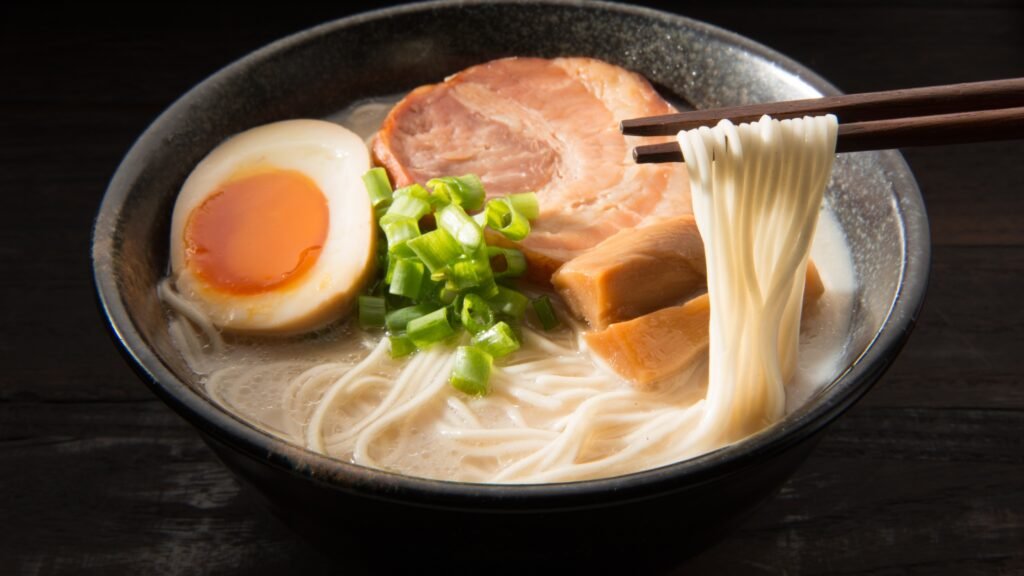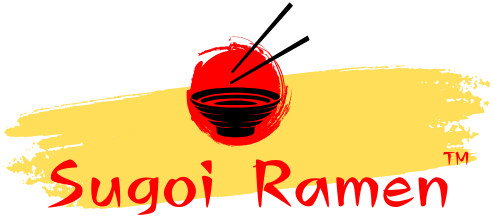Ramen, the quintessential Japanese comfort food, has captivated taste buds globally with its rich history, unique preparation, and diverse flavors. From the steaming streets of Tokyo to bustling urban kitchens worldwide, ramen has transcended borders to become a culinary phenomenon. This guide explores the most popular ramen varieties, unraveling the secrets that make them so beloved.
What Makes Ramen So Special?

At its core, ramen is a perfect harmony of five essential components: broth, noodles, tare (seasoning), toppings, and oil. The interplay between these elements creates endless possibilities, giving rise to distinct regional and modern styles. Each variety brings something unique to the table, making ramen a dish of endless exploration.
Shoyu Ramen: A Timeless Classic
Shoyu ramen, characterized by its soy sauce-based broth, is a versatile and savory favorite. Originating in Tokyo, this ramen features clear, brown soup that is light yet deeply flavorful.
Key Features of Shoyu Ramen
- Broth: A delicate balance of chicken or pork stock and soy sauce.
- Noodles: Typically medium-thin and curly, perfectly complementing the broth’s texture.
- Toppings: Often garnished with marinated bamboo shoots, scallions, and a soft-boiled egg, enhancing its umami profile.
Shoyu ramen is ideal for those new to ramen culture, offering a balanced taste that satisfies without overwhelming the palate.
Miso Ramen: The Comforting Northern Star
Hailing from Hokkaido, miso ramen boasts a hearty and rich miso-based broth. This ramen variety is perfect for colder climates, providing warmth and sustenance with its bold flavors.
Key Features of Miso Ramen
- Broth: A thick, creamy mixture of fermented soybean paste with chicken or pork stock.
- Noodles: Curly and robust, designed to hold up against the dense broth.
- Toppings: Corn, butter, bean sprouts, and ground pork make miso ramen distinctively flavorful and filling.
Miso ramen represents a modern innovation, blending tradition with a twist of indulgence.
Tonkotsu Ramen: A Creamy Delight
Tonkotsu ramen is a rich and decadent variety, crafted by simmering pork bones for hours to extract every bit of flavor and collagen. Originating in Kyushu, this ramen is celebrated for its creamy texture and luxurious taste.
Key Features of Tonkotsu Ramen
- Broth: A thick, milky soup resulting from hours of boiling pork bones.
- Noodles: Thin and straight, ideal for soaking up the flavorful broth.
- Toppings: Sliced chashu (braised pork belly), pickled ginger, and sesame seeds are must-haves.
Tonkotsu ramen is perfect for those seeking a comforting bowl with a rich and satisfying depth of flavor.
Shio Ramen: A Taste of Simplicity

Shio ramen stands out for its light, salt-based broth, making it one of the oldest ramen varieties. Its clarity and mild flavor allow the natural taste of the ingredients to shine.
Key Features of Shio Ramen
- Broth: Made with chicken or fish stock, seasoned lightly with salt.
- Noodles: Thin and slightly wavy, creating a delicate pairing.
- Toppings: Simple additions like nori (seaweed), scallions, and boiled eggs highlight its refined nature.
Shio ramen is ideal for those who prefer subtlety and elegance in their ramen experience.
Tsukemen: A Modern Twist
Tsukemen, or dipping noodles, offers a unique take on traditional ramen. Here, the noodles and broth are served separately, allowing diners to dip each bite for a customized flavor experience.
Key Features of Tsukemen
- Broth: Thick and concentrated, often made with soy sauce or miso bases.
- Noodles: Thicker and chewier than standard ramen noodles.
- Toppings: Served on the side, featuring items like pork slices, bamboo shoots, and soft-boiled eggs.
This style is perfect for those who love experimenting with texture and flavor intensity.
Regional Ramen Varieties That Shouldn’t Be Missed
Sapporo Ramen
Known for its rich miso broth, Sapporo ramen incorporates butter and sweet corn, creating a distinct Hokkaido flair.
Hakodate Ramen
A shio ramen specialty, Hakodate’s version emphasizes lightness and clarity with chicken-based broths.
Kyoto Ramen
Kyoto-style ramen often features a thick shoyu broth with a sweet undertone, influenced by local tastes.
Innovative Ramen Styles Emerging Worldwide
As ramen continues to grow in popularity, chefs worldwide are creating innovative styles that blend traditional techniques with modern flair.
Vegan Ramen

Plant-based broths using mushrooms, soy milk, or miso make vegan ramen a flavorful alternative.
Spicy Ramen
Featuring chili oil or spicy miso paste, this style is perfect for heat lovers seeking a kick.
Fusion Ramen
From Italian-inspired tomato-based broths to Thai-style curry ramen, fusion varieties showcase ramen’s global adaptability.
The Art of Perfect Ramen Pairings
While ramen is a meal in itself, pairing it with the right side dishes can elevate the experience. Some popular accompaniments include:
- Gyoza: Pan-fried dumplings filled with pork or vegetables.
- Chahan: Japanese fried rice, a hearty complement to ramen.
- Karaage: Crispy fried chicken adds a crunchy contrast.
These additions ensure a satisfying and well-rounded meal.
Crafting the Perfect Ramen Experience at Home

Recreating ramen at home is a rewarding journey. Here are some tips:
- Broth Preparation: Simmer bones or vegetables for hours for depth.
- Fresh Noodles: Opt for authentic ramen noodles or make your own for a fresh touch.
- Toppings: Experiment with chashu, soft-boiled eggs, and seasonal vegetables to personalize your bowl.
Mastering ramen at home offers a new appreciation for its artistry.
Conclusion
Ramen is more than a dish; it’s an immersive experience that bridges culture and cuisine. By exploring these most popular ramen varieties, we uncover not just their flavors but the stories they tell. Whether you’re enjoying a steaming bowl at a bustling ramen shop or recreating it in your kitchen, ramen’s charm remains timeless.
FAQ’s
Q1. What are the most popular ramen varieties?
The most popular varieties include Shoyu, Miso, Tonkotsu, Shio, and Tsukemen, each offering unique flavors and textures.
Q2. How is miso ramen different from shoyu ramen?
Miso ramen features a rich, creamy miso-based broth, while shoyu ramen is soy sauce-based with a lighter and clearer soup.
Q3. Can ramen be made vegan?
Yes, vegan ramen is made using plant-based broths such as mushroom, miso, or soy milk and includes vegetables as toppings.
Q4. What are the best toppings for ramen?
Popular toppings include chashu pork, soft-boiled eggs, bamboo shoots, scallions, and nori.
Q5. Where can I find authentic ramen recipes?
Authentic ramen recipes can be found on sugoiramen.com, which provides detailed guides to crafting traditional and modern ramen.







